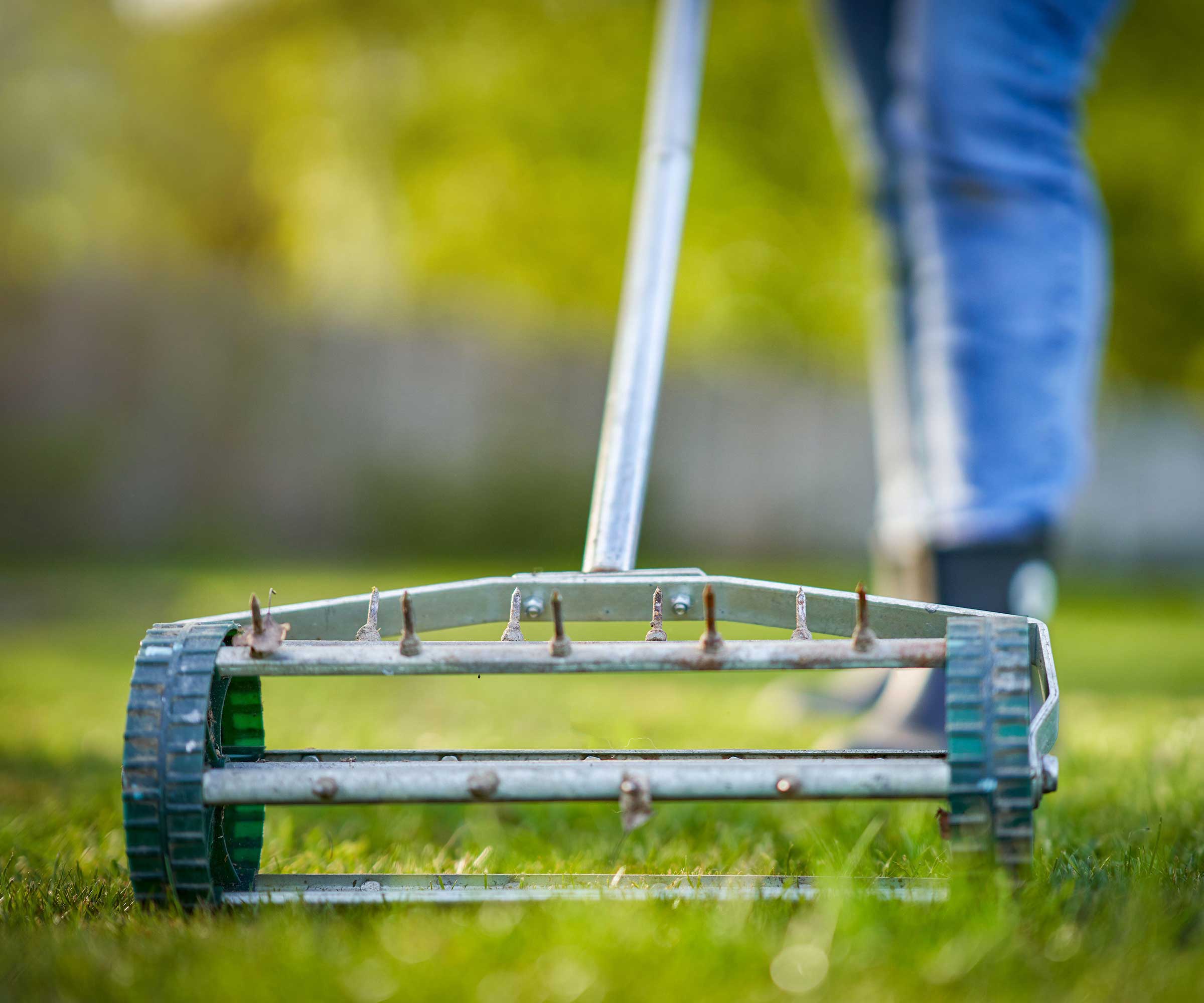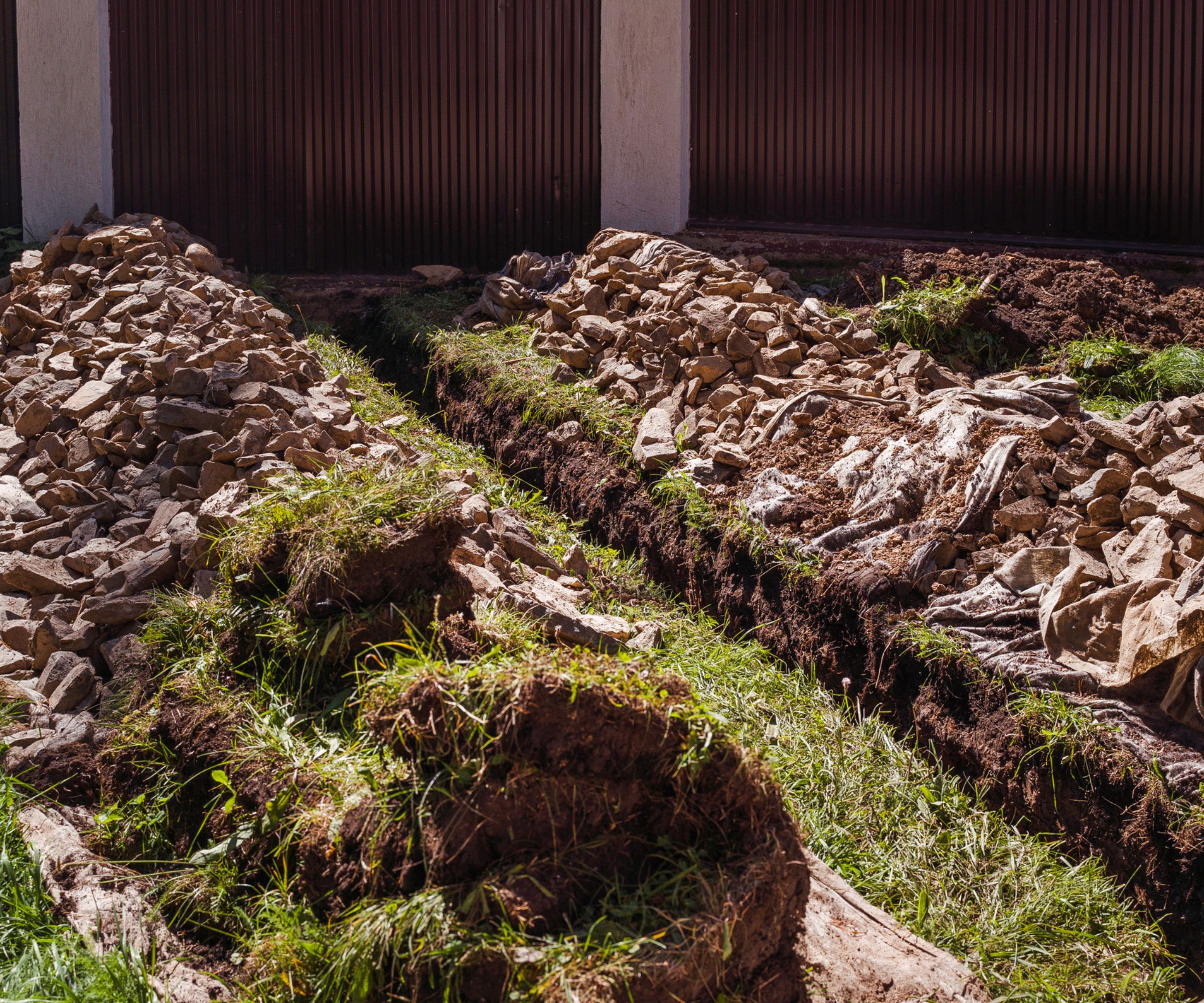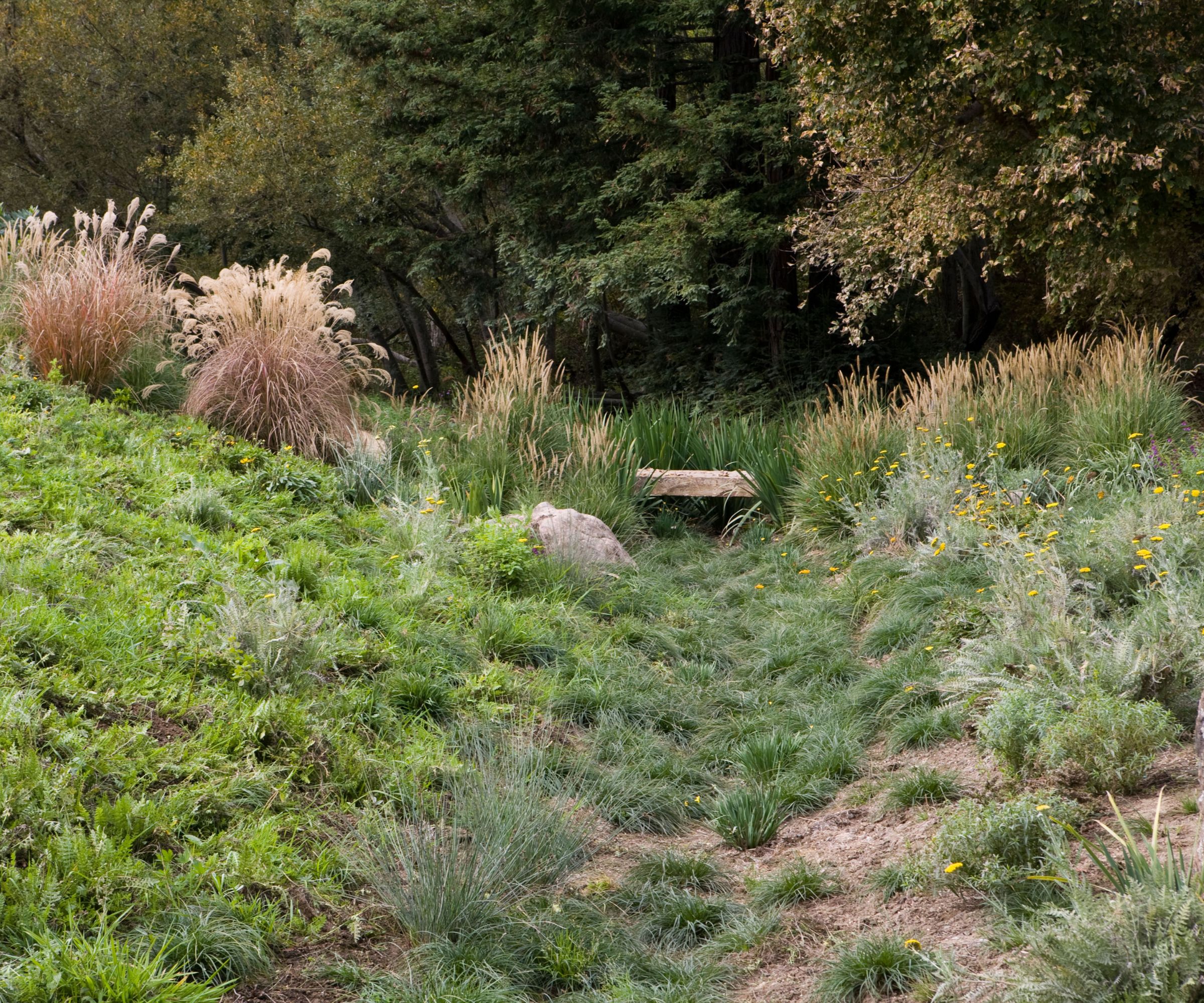Landscaping experts reveal 3 home fixes for waterlogged lawns – you won't find better DIY lawn drainage solutions
Lawn drainage can be pretty expensive, but these DIY methods can solve a waterlogged lawn for less


Few things are as frustrating as a waterlogged lawn. You can nail all your lawn care, but a sudden storm or claggy clay soil can turn even the best-kept lawn into a bog.
On top of that, fixing a waterlogged lawn can be incredibly expensive. If you've ever looked into a quote for fitting a drain you'll know that it can run into thousands of dollars.
This means that many of us look for DIY lawn drainage solutions. The good news is that there are several DIY projects that can banish standing water from your yard, however, some do require time and effort.
1. Aerate your lawns and save hundreds of dollars

Before you start digging trenches in your lawn, you have an easy and cheap solution: aeration. Aerating a lawn means poking holes in the soil or removing plugs of dirt. This is not only great for grass plants, as it means more air, water, and nutrients can reach your plant's roots, but it also means water can drain into the soil, reducing the risk of waterlogging in your lawn. In some cases, simple lawn aeration can solve drainage problems and save you hundreds or thousands of dollars in landscaping fees.
This is also a particularly cheap solution. You don't need anything fancy - you can use a push aerator like this at Target, a plug aerator like this at Amazon, or even aerating shoes like these at Walmart, and they all cost less than $100. You can also buy tow-behind aerators like this from Menards if you have a big plot, but these tend to start at around $200.
The drawback with aeration is that you can only do it at certain times of the year - in the fall for cool-season grasses like Kentucky bluegrass and late spring for warm-season grasses like Zoysia. Aeration isn't a silver bullet, either. It can certainly help, and in many cases, it can eliminate waterlogging, but it won't improve waterlogging in every case.
2. Make a French drain for hidden drainage

French drains are an incredibly popular drainage solution. These clever drains are hidden underneath lawns and are the most common solution for lawn drainage.
Design expertise in your inbox – from inspiring decorating ideas and beautiful celebrity homes to practical gardening advice and shopping round-ups.
To be clear, professionals advise against building a French drain yourself, because there's some complicated maths to calculate surface runoff to consider when perfecting a French drain. That said, the actual installation process is fairly simple.
A French drain must be installed at the bottom of a slope, and it must be drained into wells or a sewage system at either end. It must be installed in an area without other pipes or tree roots.
To install the drain, dig a 9-inch wide channel at least 18 inches deep, however long you need. After creating the channel, lay down some gravel along the length, then lay down filter fabric. After that, put down your perforated pipe. The perforated pipe allows water to enter the drain at any point along the pipe. It also means the pipe can carry most of the water to your drain or well, but the perforation means some water will slowly filter into the ground, too. Once the pipe is laid, cover it with gravel.
This can be the final step - this will give you something similar to a dry creek bed, and it can look great as a landscape feature. However, most people wrap filter fabric around the gravel and pipe, then backfill the trench with turf for a hidden drainpipe.
The only thing to bear in mind is that this can be a lot of work. Lawn expert Ryan Farley says 'You can DIY a French drain, but I’d be sure to take note of how much work this can be, along with the potential need for permits depending on where you’re going to be draining water. It’s also good to stay aware of anything buried in your yard like pipes or other lines - I’ve seen homeowners accidentally hit things while digging a French drain.'

Ryan Farley is the CEO of LawnStarter, a lawn care service founded in 2013 and based in Austin, Texas.
3. Dig a swale for simple, natural drainage

Swales are another common drainage solution - in fact, they're so common that many people have swales in their yard without knowing, and they're often seen in residential areas.
A swale is a large, wide trench at the bottom of a sloped yard. It's easiest to think of a swale like a large ditch. It disperses water over a huge area, taking it away from the main lawn where your kids might play and slowly draining the way to the edges of the yard while filtering some of it into the soil.
Swales are even simpler than French drains because they're really just big ditches. You don't need gravel or filter fabric; you don't even need a pipe. To build a swale, identify a spot at the bottom of a slope on the lawn. Then, dig a wide trench - at least a couple of yards - along the bottom of the slope. This shouldn't be too deep - probably about a foot. That's it - afterward, you can cover the ditch in turf or plant it with water-loving plants. You can also fill it with natural yard waste like leaves or sticks to help filter the water.
However, simple doesn't mean easy. Though it's a straightforward task, experts warn that digging a swale can be a lot of work. Lawn professional Jeremy Yamaguchi explains that 'You can DIY a swale, but it’s going to be a lot of work. Swales are most effective in large yards, where they can be designed to drive the water over long distances.
French drains are usually the better alternative for smaller yards. Since swales require digging trenches, that means you are going to have to put a lot of time, effort, and physical exertion into digging, which can be less feasible for certain homeowners.'

Jeremy is a gardening expert who advises on a range of gardening matters. As the CEO of Lawn Love, Jeremy helps homeowners find quality, reliable lawn care.
These DIY solutions can work well, but there are also professional solutions like herringbone or vertical drainage solutions. It's worth considering all the possible drainage ideas out there before committing to a big DIY project.

As a gardens and lifestyle contributor, Alex makes sure readers find the right information to help them make the best purchase. Alex got his start in reviewing at the iconic Good Housekeeping Institute, testing a wide range of household products and appliances. He then moved to BBC Gardeners’ World Magazine, assessing gardening tools, machinery, and wildlife products.